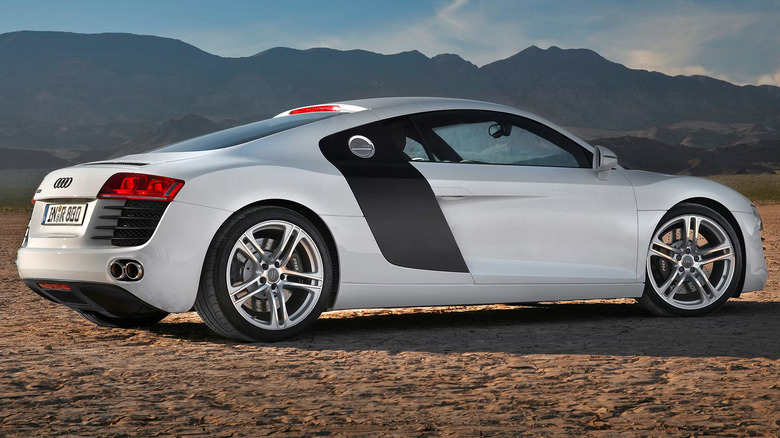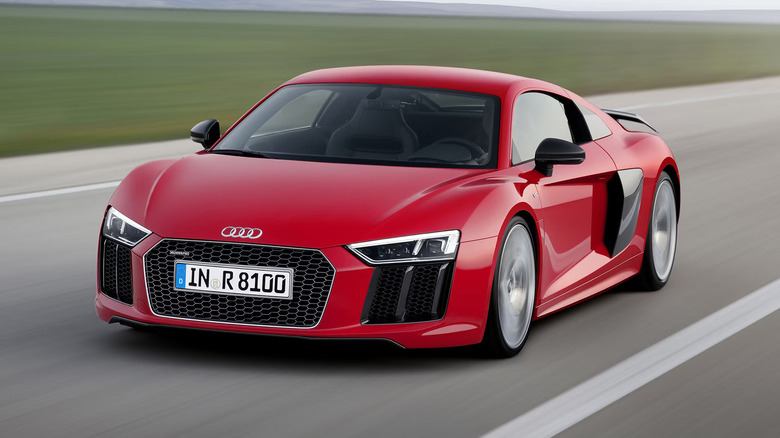Why Did Audi Discontinue The R8?
The Audi R8 was a car of many firsts for the German brand. The R8 was Audi's first supercar, and cemented the brand's stature among the Ferraris and Lamborghinis of the day. The first-generation R8 that debuted in 2006 was the first production car to debut LED headlights and LED positioning lamps, further enhancing the R8's high-tech, space-age vibe. It was essentially a concept car that came to life, drawing heavily on the hunkered-down stance of Audi's Le Mans quattro concept car that it previewed in 2003.
Undoubtedly, the R8 is one of the best-looking Audis ever made and one of the coolest German muscle cars. It also became Audi's flagship model upon launch, but never sold in absurd numbers. Peak global sales reached over 5,000 units (Coupe and Spyder) in 2008, but the numbers dipped to 1,651 units by 2021. Audi confirmed in 2022 that the 2023 model year was the last for the venerable R8 supercar, and sales rose dramatically as willing buyers lined up to snatch the last of the breed.
Despite the momentary sales hike, the numbers weren't enough to offset production costs. The final Audi R8 rolled off the production line in 2024, capping a sterling 17-year production run. Weak sales were the prominent factor for the R8's demise, but it also had to do with freeing up some funds to support the brand's transition into electrification. Killing off the Audi TT was also part of the plan.
Audi R8: Two generations of legendary performance
The Audi R8 launched in 2006 with a 420-horsepower 4.2 FSI naturally-aspirated V8 engine, mated to a six-speed automatic or six-speed gated manual gearbox. Audi introduced the R8 V10 in 2010, featuring a 525-horsepower 5.2-liter FSI V10 engine borrowed from the Lamborghini Huracán. The Huracán genes continued in 2015 when Audi unveiled the second-generation R8, which was available exclusively with a V10 engine and spawned a limited-edition, all-electric version called the R8 e-tron in 2015.
However, supercar fans were left high and dry when Audi dropped the manual gearbox for the second-generation R8. Audi made up for it by upgrading the automatic to a seven-speed dual-clutch unit. The decision opened up opportunities for independent garages to swap the seven-speed DSG for a gated manual shifter and add twin-turbocharging for more power.
The second-generation R8 also debuted the Rear-Wheel Series (RWS), commemorating the availability of rear-wheel drive to the R8's lineage. The highlight is the R8 V10 GT RWD, the most powerful rear-wheel drive production car from Audi. It featured a retuned 5.2-liter naturally aspirated V10 with 611 horsepower, enough to push it from 0-60 mph in 3.4 seconds. The Audi R8 could eventually return with all-electric power, but the German automaker has made no official statement to verify the rumors.

